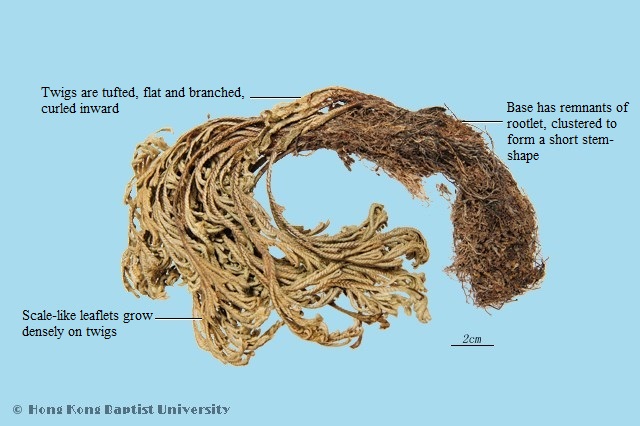Production RegionsPrimarily produced in the Chinese provinces of Guangdong, Fujian, Hunan, Sichuan.
Macroscopic FeaturesSelaginella tamariscina (Beauv.) Spring: Curled into a fist-shape, 3~10 cm long. Twigs tufted, flat and branched, green or brownish-green, curled inward, densely covered in scale-like leaflets, apex has long burrs, two rows of middle leaves, oval lanceolate, obliquely appressed on branches, leaf edge is membranous, with irregular thin saw-teeth. Dorsal side of back leaves has brownish-black membranous edge. Base has remnants of brown rootlets, scattered or gathered forming a short stem shape. Brittle texture, easily broken. faint odor, tasteless. Selaginella pulvinata (Hook. et Grev.) Maxim.: Often has scattered rootlets. Middle leaves have two rows, oval lanceolate, straightly arranged on branches. Uneven sides of leaves, relatively falt and straight inner edge, fold inward and thickened outer edge, entire leaves.
Quality RequirementsSuperior medicinal material has numerous, intact, unbroken, green leaves.
FunctionsInvigorates blood, frees channels. Apply to amenorrhea with pain, abdominal mass, and injuries from falls, externally used to traumatic injury. Juan bai charcoal resolves stasis and stops bleeding; apply to hematemesis, metrorrhagia and metrostaxis, hemafecia, anal prolapse.
OriginThe dried whole herb of Selaginella tamariscina (Beauv.) Spring, Selaginella pulvinata (Hook. et Grev.) Maxim. (Selaginellaceae)
